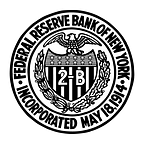Measuring Culture and Conduct
Bill Schaninger, Director, McKinsey & Company
This is being published from the New York Fed by a guest writer as part of Reforming Culture and Behavior in the Financial Services Industry: Expanding the Dialogue. The views of the author are his own and are offered by the New York Fed to contribute to discussions on this topic.
We’ve all heard the old management adage that you can’t manage what you don’t, or can’t, measure. And, we know that if something is of real importance you find a way to assess its value and progress. Tomorrow, with colleagues from two large U.S. banks and the U.K. Banking Standards Board, I will moderate a panel that will explore measurement of culture and conduct in the financial services industry.
Culture itself is often hard to define. For the purpose of the discussion, we will define culture as how an organization runs, including its management practices, what it stands for and what it values. These are all important contributors in shaping culture and its observable manifestations in individual behavior.
Like many things in business, the measurement of culture is hard, but not impossible. It requires the use of multiple sources of information and a variety of methodologies, drawing on both quantitative and qualitative approaches. By sharing lessons learned, success stories and challenges from the field, we hope to demystify the process of assessing something as seemingly intangible as culture. We will aim to put specifics around what you measure, how you measure it, how often, whom you ask, and — perhaps most important — what you do with the information to support a desired culture.
There is a lot of relevant work already underway within banks and decades more experience in other industries, well-supported by social science. In fact, it has become somewhat unusual to find an organization not measuring at least some facet of its culture (though this may often be limited to employee satisfaction or engagement).
Throughout our conversation, we will seek to draw helpful lessons from other industries, particularly those where safety and reliability are of particular importance. These include, for example, oil and gas, chemicals, mining, etc. Like banking, these industries are prone to the pressures of commodity price fluctuations, have distributed networks of assets and employees, as well as high visibility and impact on the public when they have safety, environmental or reliability incidents. Firms in these areas have tended to invest heavily in monitoring their cultures and in understanding how culture affects behavior and performance.
As the financial sector expands their efforts in this arena, I look forward to discussing how we make the measurement of culture tangible and actionable. There is no point in monitoring if you don’t take action based on the information. Firms must first make sure they are measuring the right things, and then be willing to take appropriate steps to address their findings.
